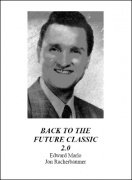

The difficulty falling asleep was hypothesized to be due to delayed-sleep phase in the low light levels of the Arctic winter. However, it is undesirable to use pharmacological interventions if other approaches can be used.

The authors considered that this may have been due to the greater recruitment of Russians from lower latitudes compared to the Norwegians Nilssen et al. The Russians, but not the Norwegians, reported more problems during the polar night. A more recent fairly large study compared Norwegians males and females and Russians males and females, all aged 18 yrs or older, living on Svalbard. Late sleep onset was the most common type of insomnia, both in winter and summer. Of the 14 male and female respondents, Insomnia in the midnight-sun period, or in spring or autumn, was much less common. The time of sunrise during lengthening days appeared to be a stronger predictor of sleep length and chronotype than daylength, itself Borisenkov, A large survey was conducted in Tromso, a Norwegian city north of the Arctic Circle. Notably, sleep was shorter and chronotype later during equinoctal periods compared to long days. A questionnaire study participants has described the dependence of sleep length and chronotype, i. On the time-restricted regimen, the men had lower insulin, reduced levels of oxidative stress, less nighttime hunger and significantly lower blood pressure. The researchers had the subjects eat enough food to maintain their weight so they could assess whether the time-restricted regimen had any health benefits unrelated to weight loss. In the other phase, they were fed the same meals in a six-hour window beginning each morning. In one phase of the study, the subjects ate their meals in a hour daily window for five weeks. Peterson conducted a tightly controlled experiment in a small group of prediabetic men.

Despite both groups consuming the same amount of calories, the mice that ate whenever they wanted got fat and sick while the mice on the time-restricted regimen did not : They were protected from obesity, fatty liver and metabolic disease. The other ate the same foods but in an eight-hour daily window. One had round-the-clock access to high-fat, high-sugar foods. Panda and his colleagues at the Salk Institute took genetically identical mice and split them into two groups. Another study found that forcing people to stay up late just a few nights in a row resulted in quick weight gain and reduced insulin sensitivity, changes linked to diabetes. In one experiment, scientists found that assigning healthy adults to delay their bedtimes and wake up later than normal for 10 days - throwing their circadian rhythms and their eating patterns out of sync - raised their blood pressure and impaired their insulin and blood sugar control.

While socioeconomic factors are likely to play a role, studies suggest that circadian disruption can directly lead to poor health. Nighttime shift work is linked to obesity, diabetes, some cancers and heart disease. Many frequently work overnight shifts, forcing them to eat and sleep at odd times.


 0 kommentar(er)
0 kommentar(er)
